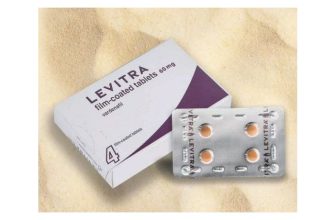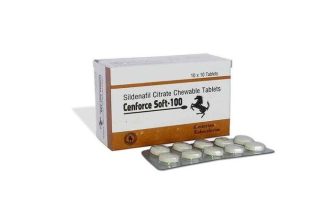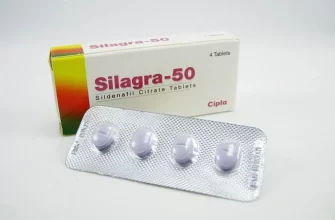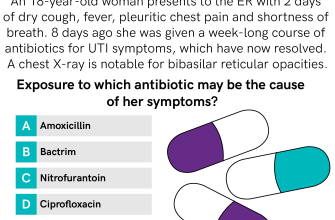Administer Phenergan cautiously in children, always adhering to precise dosage guidelines based on weight and age. Never exceed the recommended maximum daily dose.
Closely monitor children for adverse effects, particularly sedation and extrapyramidal symptoms (EPS). EPS manifest as muscle rigidity, tremors, or involuntary movements; promptly contact a medical professional if observed.
Oral administration is generally preferred for its ease of use, but intramuscular or intravenous routes may be necessary under specific circumstances. Parenteral administration requires careful monitoring for potential injection site reactions.
Consider alternative medications if possible, especially for children with underlying respiratory conditions, as Phenergan can suppress respiratory function. Always weigh the benefits against the risks when making treatment decisions.
Remember: This information is for educational purposes only and does not substitute professional medical advice. Consult a physician before administering Phenergan to any child. Always follow the physician’s prescribed dosage and administration instructions.
Specific dosing information and contraindications should be verified with the most current product monograph or consulted with a qualified healthcare professional.
- Phenergan in Pediatric Patients: A Detailed Overview
- Common Pediatric Uses
- Safety Considerations
- Administration
- Alternatives
- Monitoring
- Indications and Appropriate Use in Children
- Dosage and Administration Guidelines for Pediatric Patients
- Potential Side Effects and Adverse Reactions in Children
- Precautions and Contraindications for Pediatric Use of Phenergan
- Dosage Considerations
- Pre-existing Conditions
- Post-Administration Monitoring
- Alternative Medications
Phenergan in Pediatric Patients: A Detailed Overview
Use Phenergan cautiously in children. Always follow your doctor’s precise instructions regarding dosage and administration. Dosage is weight-based and varies significantly depending on the child’s age and the reason for prescription. Never exceed the recommended dose.
Common Pediatric Uses
Phenergan, primarily promethazine, commonly treats nausea and vomiting in children, especially post-operatively or due to motion sickness. It also possesses mild sedative properties, sometimes helpful in managing anxiety before procedures. However, its use for sedation is becoming less frequent due to safety concerns.
Safety Considerations
Respiratory depression is a significant risk, particularly in young children or those with pre-existing respiratory conditions. Closely monitor breathing after administration. Also, be aware of the potential for extrapyramidal side effects, such as dystonia, in children. These effects are typically reversible with appropriate medication. Allergic reactions, although rare, can be serious; be prepared to address anaphylaxis.
Administration
Phenergan is available in oral syrups and rectal suppositories, offering flexibility for different situations and patient preferences. Oral administration is generally preferred for children who can tolerate it, ensuring more accurate dosing. Rectal administration may be necessary for vomiting or inability to swallow.
Alternatives
Other antiemetics and sedatives are often preferred over Phenergan in children, especially due to the risks associated with promethazine. Consult your pediatrician to explore safer alternatives, such as ondansetron or metoclopramide, for nausea and vomiting, and other options for sedation.
Monitoring
Continuous monitoring of vital signs, particularly respiration and heart rate, is crucial following Phenergan administration. Regularly assess the child’s level of consciousness and report any unusual changes immediately. Document all administered dosages and observations meticulously.
Indications and Appropriate Use in Children
Phenergan, or promethazine, is used in children primarily to treat nausea and vomiting. It’s also helpful for managing allergic reactions and as a sedative before medical procedures. Always follow a doctor’s precise instructions regarding dosage and administration.
For nausea and vomiting, the dosage depends on the child’s weight and the severity of the symptoms. A healthcare professional will determine the appropriate dose, ensuring it aligns with established guidelines to minimize side effects.
In managing allergic reactions, Phenergan may be used to control itching and swelling. However, it’s crucial to remember it’s not a first-line treatment for severe allergic reactions (anaphylaxis). Epinephrine is the primary medication in such cases.
Pre-operative sedation is another application, offering calming effects before surgery or other procedures. Dosage is carefully calculated based on the child’s age and the type of procedure. Close monitoring by medical professionals is always required.
Parents should always consult a pediatrician before giving Phenergan to their children. They should thoroughly discuss the child’s medical history, any existing conditions, and potential drug interactions to ensure safe and appropriate use. Observe your child closely for any adverse reactions after administration and report any concerns immediately to their doctor.
Remember, this information is for general knowledge only and doesn’t replace professional medical advice. Always consult a healthcare provider for diagnosis and treatment.
Dosage and Administration Guidelines for Pediatric Patients
Always consult your pediatrician before administering Phenergan to a child. Dosage is determined by the child’s weight and the specific condition being treated.
Oral Administration:
- The usual starting dose is 0.5 to 1 mg per kilogram of body weight every 4 to 6 hours as needed for nausea and vomiting.
- Maximum daily dose: Do not exceed 5 mg/kg/day.
- Administer with food or milk to minimize stomach upset.
- Use a calibrated measuring device to ensure accurate dosing.
Rectal Administration:
- This route is often preferred for children who are unable to take oral medication.
- Dosage is typically the same as the oral route, 0.5 to 1 mg/kg, every 4 to 6 hours as needed.
- Ensure proper placement of the suppository.
Intramuscular Administration:
- This route is generally reserved for situations where oral or rectal administration is not feasible.
- Dosage and frequency should be determined by a physician based on individual patient needs.
- Deep intramuscular injection is recommended to minimize local irritation.
Important Considerations:
- Closely monitor the child for side effects, such as drowsiness, dry mouth, and constipation.
- Avoid administering Phenergan to children with a known allergy to phenothiazines.
- Use caution in children with respiratory conditions, as Phenergan can cause respiratory depression.
- Inform your doctor about all other medications the child is taking.
- Store Phenergan in a cool, dry place, away from direct sunlight and children.
This information is for guidance only and does not replace professional medical advice. Always follow your doctor’s instructions.
Potential Side Effects and Adverse Reactions in Children
Administering Phenergan to children requires careful monitoring for side effects. Drowsiness is common; ensure children are supervised and avoid activities requiring alertness, especially driving or operating machinery. Extrapyramidal symptoms (EPS), including muscle stiffness, tremors, and involuntary movements, can occur, particularly in higher doses. Contact your pediatrician immediately if you observe these symptoms.
Low blood pressure (hypotension) is another potential risk, especially in dehydrated children. Ensure adequate fluid intake. Also, watch for signs of jaundice (yellowing of skin or eyes), which might indicate liver problems. Report any changes in skin or eye color to your doctor immediately.
Respiratory depression, though rare, is a serious concern, especially in infants and young children with underlying respiratory issues. Monitor breathing carefully, particularly after the initial dose. Sudden, unexplained difficulty breathing necessitates immediate medical attention.
Neuroleptic malignant syndrome (NMS), a rare but serious reaction characterized by high fever, muscle rigidity, altered mental status, and unstable blood pressure, is a possibility. This requires prompt hospitalization. Allergic reactions, such as skin rash or hives, also warrant immediate medical evaluation.
Remember: This information is not exhaustive. Always follow your pediatrician’s instructions and report any concerns immediately. Dosage adjustments might be necessary based on the child’s age, weight, and medical condition. This is not a substitute for professional medical advice.
Precautions and Contraindications for Pediatric Use of Phenergan
Always monitor children closely after administering Phenergan, particularly for signs of drowsiness, respiratory depression, or extrapyramidal symptoms (EPS) like muscle stiffness or uncontrolled movements. These effects are more pronounced in young children.
Dosage Considerations
Strictly adhere to prescribed dosages. Overdosing can be dangerous. Adjust dosages based on the child’s weight and age, as per your doctor’s instructions. Consider using liquid formulations for easier administration to younger children.
Avoid using Phenergan in infants younger than two years old unless explicitly directed by a physician due to increased risk of respiratory complications. In addition, Phenergan is not suitable for premature infants.
Pre-existing Conditions
Refrain from using Phenergan if the child has a history of seizures, glaucoma, porphyria, or severe liver or kidney impairment. Be cautious when administering Phenergan to children with asthma or other respiratory conditions, as it can worsen symptoms.
Inform your doctor about any other medications your child is taking before using Phenergan. Interactions with other drugs, particularly CNS depressants, can be hazardous.
Post-Administration Monitoring
Keep a close eye on your child for several hours after administering Phenergan. This allows you to immediately address any potential adverse effects. Immediate medical attention is crucial if you notice signs of an allergic reaction (rash, hives, swelling) or severe respiratory distress.
Alternative Medications
Discuss safer alternatives with your pediatrician if Phenergan is unsuitable or poses significant risks to your child. Many other medications effectively treat nausea and vomiting in children.










